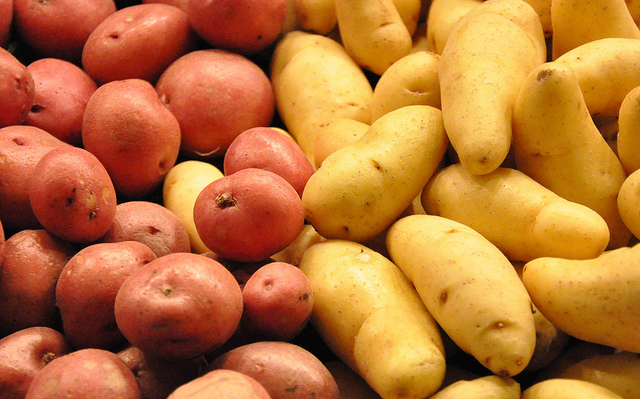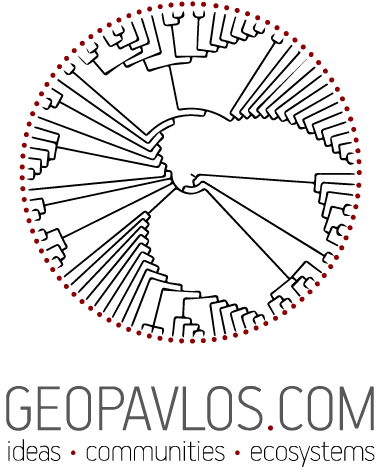The true cost of the cheap potato

Photo: Buzz Hoffman @Flickr
We seem to be trapped into a society in which consumers want to pay less for their food, while farmers want to produce bigger amounts and more efficient, eg. more specialized. Most farmers can ensure an income only when they meet the criteria for agricultural subsidies. Of course, it is very difficult to operate outside a system that is based on monocultures, chemicals on the field and intensive irrigation. At the same time, although more and more people recognize that the way food is produced and consumed is not right, it is very difficult to change their consumption habits.
In the last decades, the EU Common Agricultural Policy achieved its goals of producing sufficient amounts of food in low prices. This came at a cost, as it also played a major role in creating an unjust production/consumption model, resulting into the huge loss of biodiversity, over-production and mistreatment of animals. In my country, Greece, the consequences were also dramatic. In just three decades, most of local crop varieties were lost and our dry land agriculture has almost vanished. In Crete, 2,500-year-old olive trees were turned into firewood in just a few years’ time. The same period saw the creation of a generation of farmers and politicians that are exclusively dependent on agricultural subsidies. Instead of Greek agriculture being a model of innovation and productivity, given its favorable climate and fertile soils, nowadays we import most of our food, while the average Greek lives at 181% above the sustainability level. Some people even go further to link aspects of the CAP with the recent economic failure of the country.
Similar problems exceed national borders, as the jigsaw of industrial agriculture in the way it was encouraged by the CAP in the last 50 years is extremely complex. And I am wondering, what future do we dream for Europe when:
- Every year, 90 million tons of food are wasted in the 27 EU member-states. This equals to about 179 kg per person.
- 42 million Europeans live under conditions of severe deprivation, while 250 million are overweight.
- Today, 75% of our food is based on just 12 plant and 5 animal species!
- In about just one century, about 75% of plant genetic diversity is lost, while 30% of animal breeds are under the threat of extinction. We are losing about 6 animal breeds every month.
- Only in the last years, the land used for soya production in Brazil for the European market equals to 19,500 sq. km of deforested tropical rainforest. This is about 2/3 the size of Holland.
- Soils contain 25% of the Earth’s biodiversity. Bad soil management costs more than a trillion Euro per year, globally.
- Although 76% of crops and 84 of total plant species are pollinated by bees, the erosion of their populations is worrying. Butterflies in European pastures are reduced by 70% since 1990.
- The value of insect pollination in European agriculture is estimated at 22 million Euro annually.
- Between 1980 and 2008, farm bird populations were reduced to about the half.
- At least 14 member-states and 100 million EU citizens are facing severe water shortages.
- Agricultural production uses 24% of Europe’s water resources, with this percentage reaching 80% in the European south.
- 3.3 cubic meters of water are required to produce 1 kg of eggs; 1.3 cubic meters for the production of 1 kg of wheat; and 15.5 cubic meters for the production of 1 kg of beef.
- In 2011, every European consumed 85.7 kg of meat. This is double from the global average.
- Large scale animal production is responsible for 85% of total agricultural emissions of greenhouse gases in Europe.
- The annual cost of decontamination of water bodies from agricultural chemicals ranges between 522 and 847 billion Euro. In 2007-2008, French water companies spent 144 million Euro in combating water pollution.
- Every year in the UK, health problems related to pesticides cost 171 million pounds (= 206 million Euro).
- Only 7% of European farmers are below the age of 35.
- The EU spends for its CAP 371.72 billion Euro for the period between 2014-2020. This is more than 50 billion every year and equals to 37% of total EU budget.
Despite all these facts, the European farmer continues to have very few incentives for getting friendlier to the environment. The current CAP does not help, since it does not support enough sustainable farming practices. The problem will get worse, unless real incentives to encourage sustainable, environmentally functional production are in place. In other words, unless we achieve a greener and fairer CAP.
Furthermore, consumers owe to be informed and demanding, and should be looking forward. The cheap potato may spare us some money now. But with one or another way, the money required for agricultural subsidies and for balancing the negative consequences of this production model must be paid at some point.
Source: The Truth Behind the CAP: 13 Reasons for Green Reform (pdf), a publication by Birdlife, WWF and others.
Article awarded as 3rd runner-up at the IUCN Thompson-Reuters Awards.
